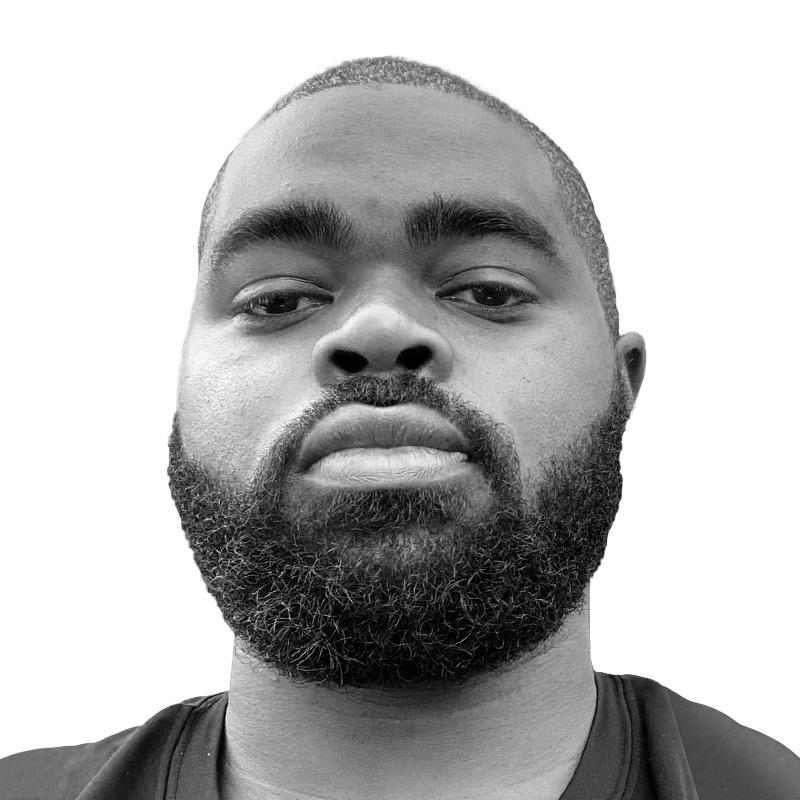No matter what you think of your favorite team’s haul in last weekend’s draft, it’s never too early to look ahead to the biggest names and brightest stars (plus a few sleepers) who could define the 2026 draft class. Still looking for a long-term quarterback solution?
The next quarterback class looks deeper and more talented than what we saw this year, and it has more star power, thanks to Arch Manning. The class should also include several fascinating offensive tackle prospects, a handful of star edge rushers, and multiple cornerbacks who look like they’ll be able to step in and make an instant impact in the pros.
In honor of the class of 2026, these are the 26 pro prospects I’m watching.
Quarterbacks Who Matter
Arch Manning, Texas
The #MarchForArch begins now. Unless Manning has a season from hell at Texas (à la Quinn Ewers), I expect him to declare for the draft at the end of the season and be in contention to be the top quarterback in the class. Manning doesn’t have a ton of tape to support the hype—most of his work thus far at Texas has come in garbage time or when Ewers was injured—but he has the traits that teams typically want from a first-round passer.
He’s listed at 6-foot-4 and over 220 pounds, and his build and play style remind me of a less physically gifted Trevor Lawrence. You can see his arm talent in how easily he puts velocity on his throws outside the numbers and to the middle of the field, and he has the touch to throw the ball deep with accuracy. He also has enough mobility and strength to escape pressure and extend plays. His athleticism flashes in a spread-out college offense, but once in the NFL, he should be able to use his legs effectively on designed quarterback runs.
He needs more reps against top competition in the SEC and experience working through passing concepts as a starter, but I’d also like to see Manning improve his feel for pressure and work on resetting his feet to throw after evading rushers. If he can check those few boxes this season, NFL teams will start jockeying to draft the most famous last name in football history.
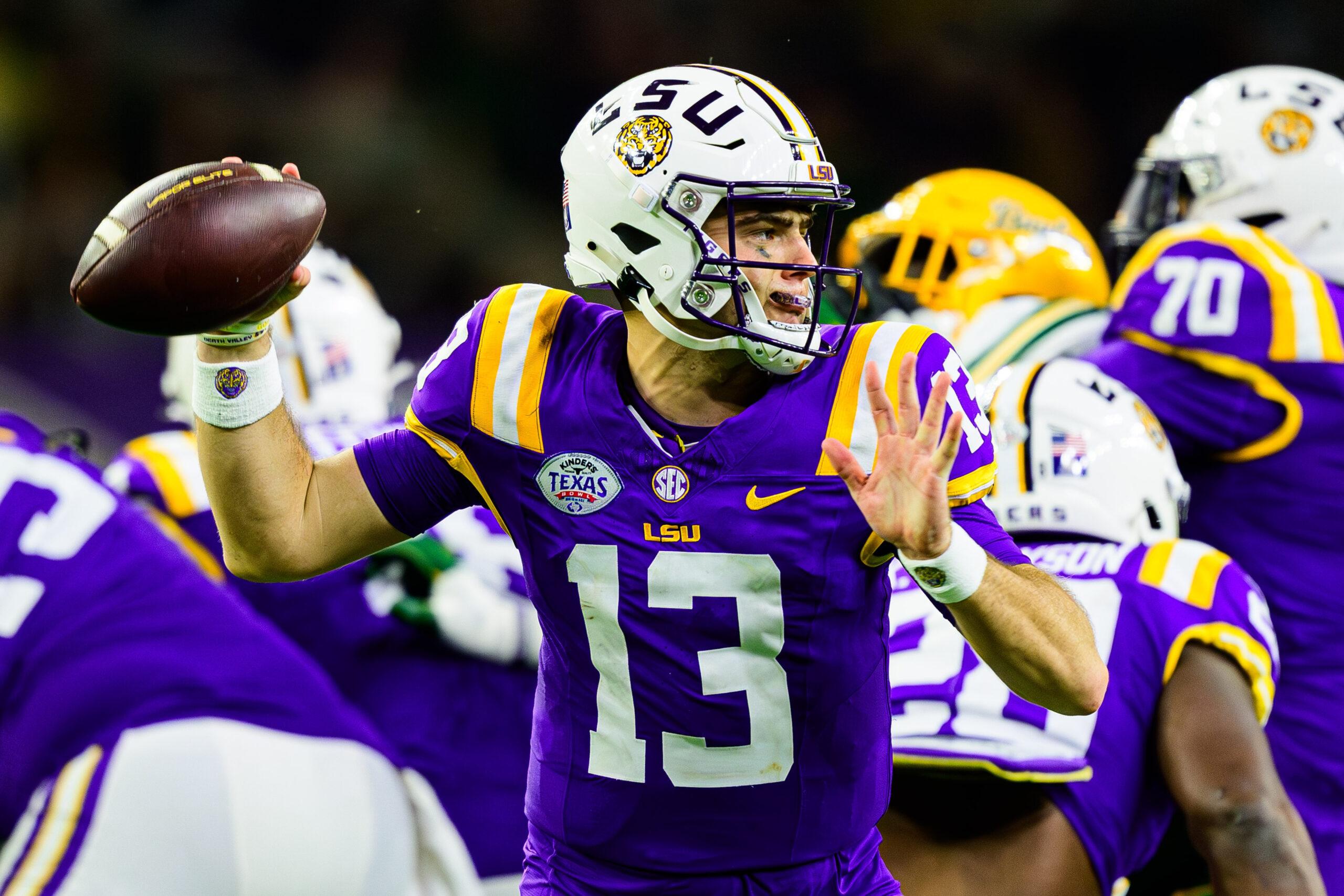
Garrett Nussmeier, LSU
If a quarterback prospect doesn’t have blue-chip physical traits, he had better play like Nussmeier. The LSU quarterback is a model of consistency when it comes to his footwork and throwing motion, and he’s one of the most accurate college passers of the past half decade.
Nussmeier is a receiver’s best friend. When he’s able to throw from a stable base, he almost always throws passes directly at eye level for his receivers to track. You can tell that he’s the son of an NFL offensive coordinator (Doug Nussmeier, now with the Saints) because of his footwork in the pocket and his balanced mechanics. He seems to process well, too, and he knows how to play within structure but is unafraid to improvise if necessary.
I enjoy watching Nussmeier, but I expect his draft projection to be all over the place by next spring. His downfield aggression borders on reckless, so you’ll have to live with the turnovers that come with his play style. He doesn’t have the strongest arm and has a tendency to commit turnovers or throw bad passes when pressure is bearing down on him. A fair comparison for him may be a shorter Jared Goff, but that’s clearly worth first-round consideration.
LaNorris Sellers, South Carolina
If Nussmeier isn’t your kind of quarterback, I promise Sellers will be. Inside of Sellers are two wolves: one that wants to break his receivers’ fingers by ripping throws as hard as he can and another that’s offended by the thought that a linebacker might be able to chase him down or that a defensive back would dare tackle him in the open field. His arm strength pops on film, and he’s got that quick-twitch athleticism you see from only the true difference-making, dual-threat passers.
This year, Sellers should work to improve his throwing platform. Once that happens, his completion percentage will climb. He’s already shown he can move within the pocket and deliver throws from various arm angles, and I appreciate that he’s committed to finding the right throw before he tries to run. If there’s something to be concerned about, he’s still a little late as a decision-maker in the passing game, and he can get happy feet while waiting for things to break open downfield.
If NFL scouts watch Sellers and think he needs more time before he’s an NFL starter, I won’t begrudge that evaluation. But the star potential is there, and there’s no way a guy like this will have to wait very long to hear his name called on the next draft day.
Drew Allar, Penn State
Allar has a heartwarming story to tell about his journey to this point. His size and raw arm talent gave him the profile of a non–Power Five–conference quarterback. Then, during the COVID-19 pandemic, Allar honed his mechanics and tried to perfect his throwing motion, work that led to a breakout performance in his junior season and big-school offers by the time he graduated. He decided to return to school rather than enter the 2025 draft in hopes of leading Penn State to a national championship after coming up short in the CFP semifinals last season.
His tape shows he has the physical tools, especially the arm strength, to play in the NFL. Still, I struggle with how his current playing style will translate to the NFL. Penn State ran a simplified passing game last season, and I wasn’t totally impressed with how Allar worked through progressions or solved problems for his team when plays broke down. He’s a physically imposing guy on the field, but he’s not a fluid athlete, and that keeps him from being a threat as a runner or a creative passer when on the move. Allar is still a project, but I expect NFL teams will be willing to take a chance on him.
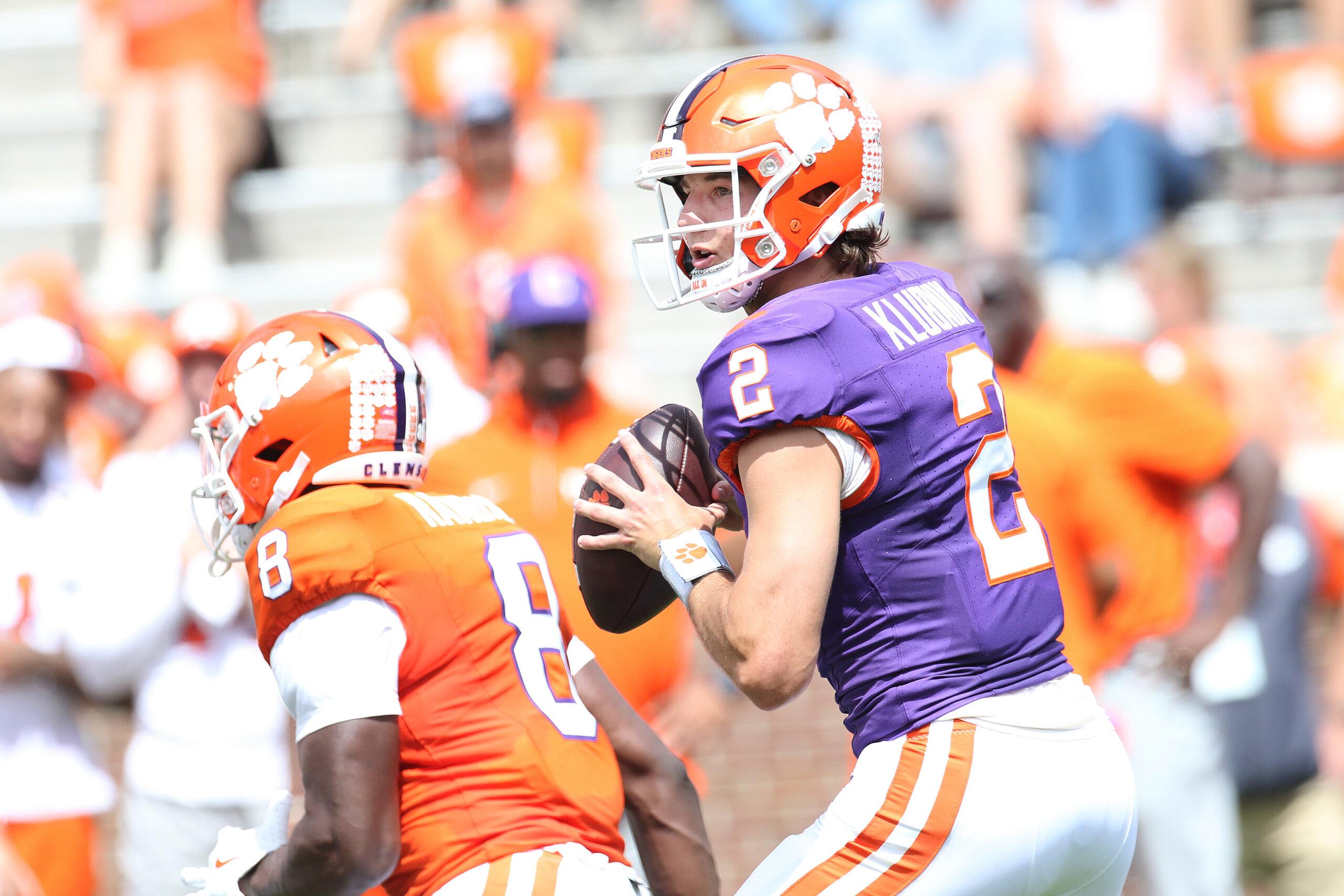
Cade Klubnik, Clemson
Klubnik’s college career has already been a roller coaster. He arrived at Clemson as a five-star recruit, ready to be the next big thing at a school known for producing NFL quarterbacks. Both Klubnik and the Clemson program as a whole have gone through struggles in the past two seasons, but he’s in a position to become a big-time riser in this quarterback class, especially if the Clemson program can get back on track.
Klubnik has all the fluid athleticism that Allar lacks. Klubnik is a good rotational athlete and throws the ball with ease from any arm trajectory and to all three levels of the field. He has a good bounce in the pocket, maneuvering to find open throwing windows, and he’s got the necessary burst to be an effective scrambler. He throws a beautiful ball outside of the numbers, and he’s gotten better at driving the ball in the middle of the field over the past two seasons.
He doesn’t anticipate throws as often as I’d like, but I think the combination of tools is there to make him a winning quarterback in the pros, even if his best comp is early-career Derek Carr.
Carson Beck, Miami
I’m including Beck in this group only because he’s a recognizable name, and by the time the 2026 draft rolls around, he’ll have spent his entire college career playing for teams with national championship aspirations (first at Georgia and now at Miami). Beck reminds me of Nick Foles because you see the outline of the things you like in a quarterback: He understands progressions, he meets the baseline threshold for athleticism, he’s willing to throw in the middle of the field, and he has the size and physicality to make plays under duress.
But when you watch him on film, you see that in order to be accurate, he needs to have a clean pocket. He drops his eyes, his footwork breaks down when he’s under pressure, and he seems to play as if he’s focused on avoiding turnovers. He always had just average arm strength, but it also looks like he’s lost some zip on his throws after a surgery to repair a torn UCL. Maybe Beck can be a fringe starter in the pros, but he has some major questions right now.
Offensive Playmakers
Jeremiyah Love, RB, Notre Dame
The list of potential first-round running backs in the 2026 class may be just two names long, and Love is the best one. He might be special enough to garner Heisman consideration next season. Love is equal parts smooth and sudden as a runner, toggling between a one-cut style when he runs between the tackles and dynamic playmaking once he’s in the open field. I also think Love has the potential to contribute as a receiver, but he hasn’t been able to show it yet because of Notre Dame’s scheme.
Nick Singleton, RB, Penn State
I am always drawn to backs that run as if they’re angry at the constraints of physics. Singleton has that kind of determination, where it always looks like he’s searching for another gear—and he’s unafraid of running through a defender’s chest to find it. Stylistically, his leg drive and his physicality through contact remind me of Frank Gore. I don’t know if he has true superstar potential in the NFL because he lacks long speed, but he can catch out of the backfield, and he’s a willing blocker, so plenty of teams at the next level will likely see him as a useful back.
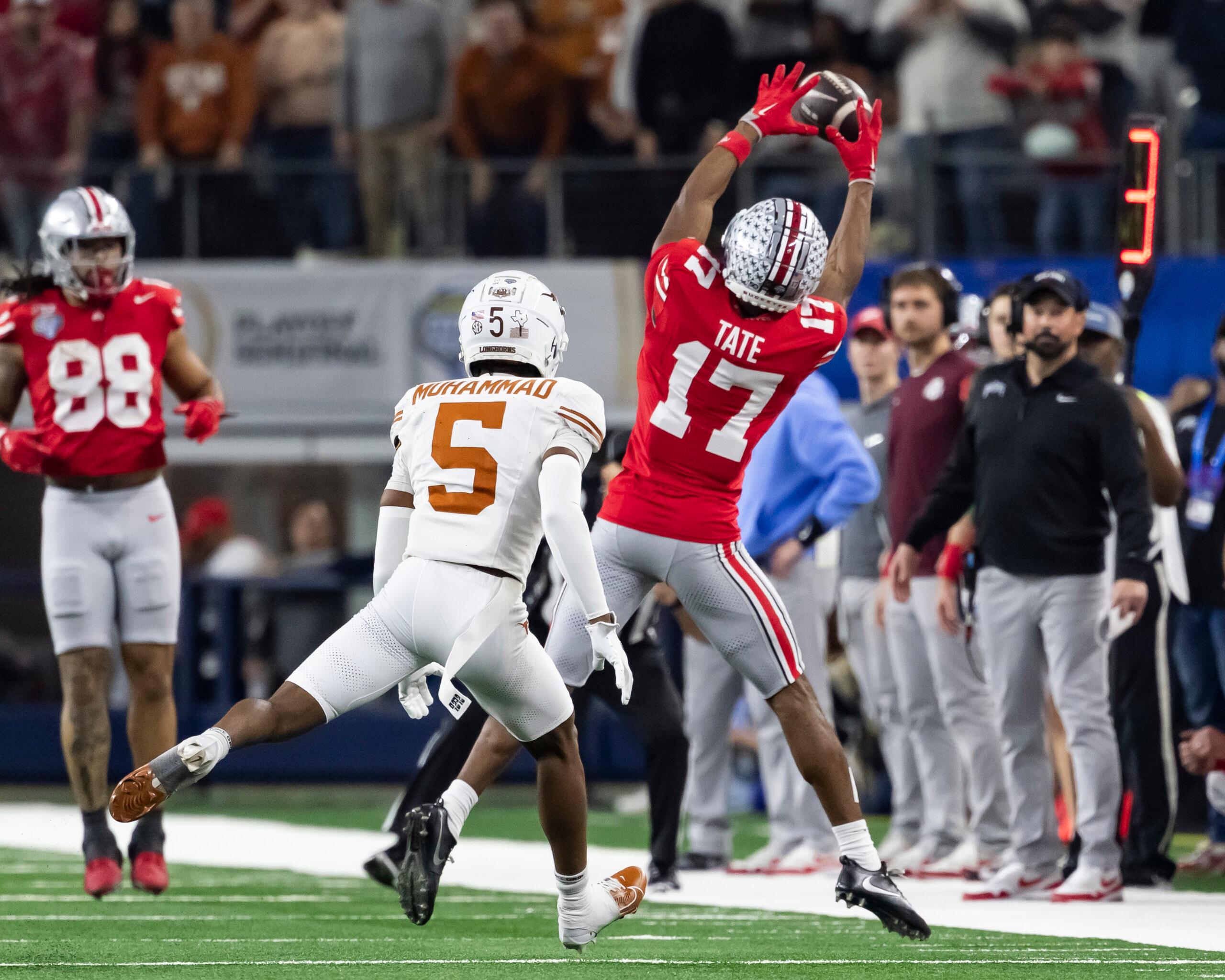
Carnell Tate, WR, Ohio State
The pipeline of Ohio State wide receivers never stops, and Tate looks like he’ll be the next blue-chip prospect, following in the steps of Emeka Egbuka (2025), Marvin Harrison Jr. (2024), Jaxon Smith-Njigba (2023), and Garrett Wilson and Chris Olave (2022). Tate’s smooth movement skills belie his 6-foot-3 frame, and that’ll give him the flexibility to play in the slot or outside at the next level. Tate has an extensive catch radius, so quarterbacks should feel confident trusting him in contested catch situations. If there’s going to be a knock on Tate, it’ll be his lack of explosive athleticism—he doesn’t have impressive speed in the open field and you don’t see him snag many passes at the highest point.
Evan Stewart, WR, Oregon
Stewart’s athletic profile will be a big deal next spring because he has legitimate field-warping speed. In high school, Stewart won the Texas state title in the long jump and finished second in the triple jump, and ran a 10.58-second 100-meter dash. That speed translates to the football field, and you can see it in his first few strides off the line of scrimmage. He also can win jump balls in a way you don’t often see for a receiver under 6 feet tall. His hands are good and I like his ball-tracking skills, even when he’s fighting against tight coverage.
My only hangup with Stewart is that his athleticism is more linear than lateral, and that shows up in both his route-running ability and how he’s able to move after the catch. He does a great job of catching passes through contact for someone his size, but he’s not much of a tackle breaker in the open field. I’d like to see him show a little more separation as a route runner, and if he does I expect first-round buzz by the end of the upcoming season.
Nic Anderson, WR, LSU
I’m calling my shot on Anderson right now. He missed all but one game last season at Oklahoma with a quad injury and then transferred to LSU. He hasn’t garnered much consideration as a first-round talent … yet. But Anderson is my preferred kind of receiver prospect: he’s 6-foot-4 with powerful strides and enough burst to separate from defensive backs while in his route. He gained 798 yards on just 38 receptions as a freshman in 2023, and if he’s back to full health I’d expect him to be an explosive playmaker in LSU’s offense, much like Brian Thomas Jr. was two years ago. He has good hands, tracks the ball well in the air, and can win over the top of defensive backs in contested catch situations. His most valuable asset is how smooth he looks as a runner when the ball is in his hands, and he can pull away from defensive backs in the open field.
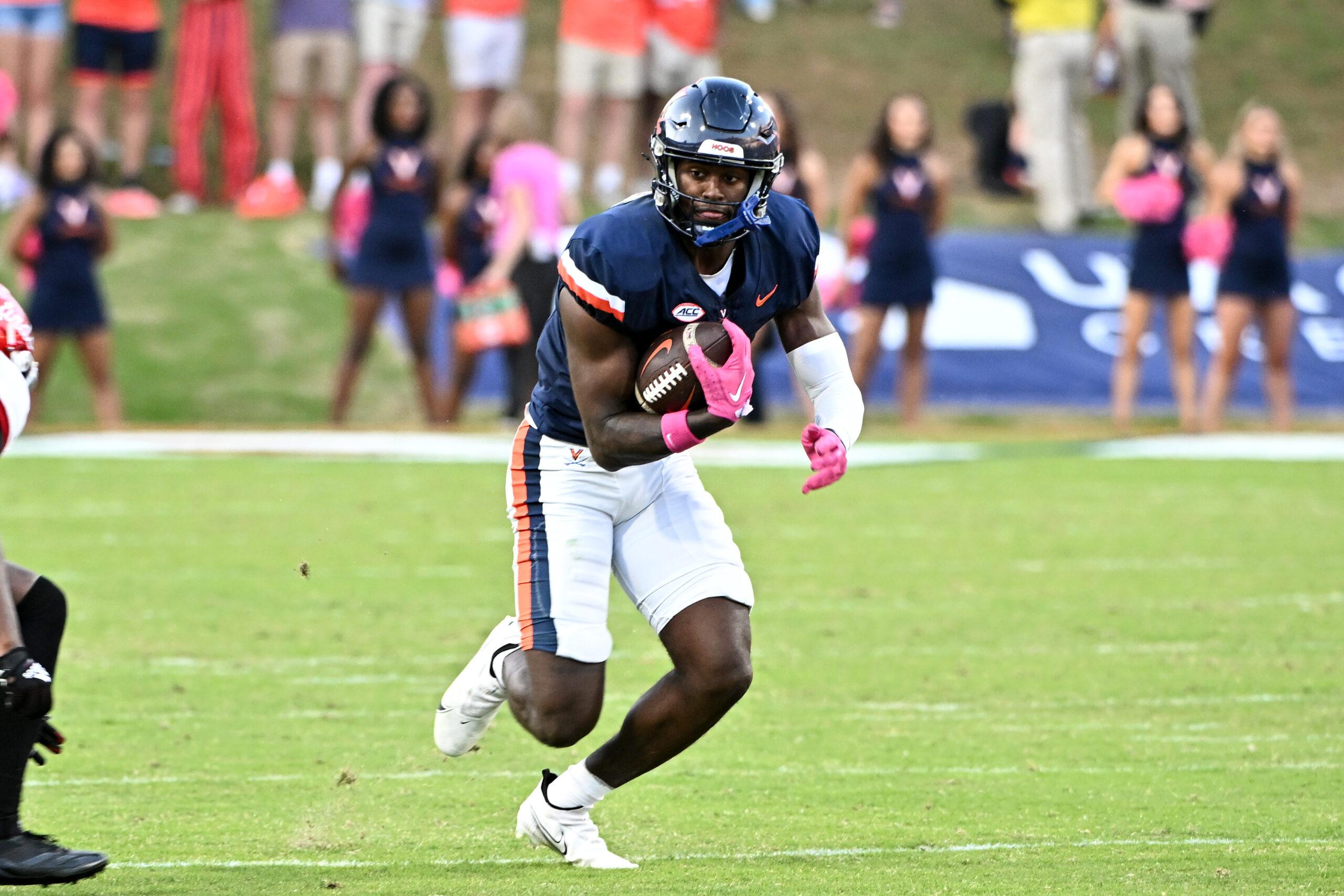
Malachi Fields, WR, Notre Dame
If you created a wide receiver from scratch in the EA Sports College Football 25 video game, you’d make a guy with Fields’s physical build: 6-foot-4 and 220 pounds. The first clips I watched of him were as funny as they were intriguing, because he looks like an edge rusher lined up as an outside receiver. His speed comes from his powerful strides instead of in short bursts, so there’ll be questions of whether Fields can separate early in his route when facing NFL defensive backs, but I don’t imagine he’ll have much problem physically handling tight coverage. He has a wide catch radius and can track the ball far outside of his body, even if defenders are right in his hip pocket. I do wonder about how diverse his route tree will be in the NFL because he doesn’t snap off his routes quickly or change his speeds very well, but he can be an explosive big-play machine similar to DK Metcalf.
He has only one full season as a significant contributor under his belt, so there’s no assurance he’ll declare for the draft next year. If he doesn’t, he could enter the portal and be the hottest commodity in college football.
Eli Stowers, TE, Vanderbilt
Stowers is basically the only tight end that I’d consider to be in the first-round conversation right now. A highly-recruited quarterback who started his career at Texas A&M, he’s switched positions and shows all the movement skills and catching ability you’d want from a modern NFL tight end. He can align just about anywhere on the field and is athletic enough to improve as a route runner with more reps. If he’s not a first-rounder next April, it’ll be almost squarely because the NFL doesn’t think he can handle in-line blocking at the next level, so I’ll have my eyes on his development in that area next year.
Talent in the Trenches
Kadyn Proctor, OT, Alabama
Even if you’re a casual college football fan, you’re probably familiar with Proctor’s name. He was a five-star prospect coming out of high school who flip-flopped his commitment from Alabama to Iowa and finally back to Alabama. He’s listed at 6-foot-7 and 360 pounds; I can’t imagine anything scarier if you’re an SEC linebacker than watching him come charging into the second level of a defense as a run blocker. His tape shows him
opening up major holes when taking on two defenders or when working as a zone blocker. Proctor’s footwork has room for improvement, but he’s got enough raw strength to make it difficult for opposing pass rushers to overpower him. He also knows how to work angles well enough to keep edge rushers from getting around him. Physically, all the tools are there—he just needs to show a bit more polish in 2025 to cement himself as a top-shelf left tackle.
Isaiah World, OT, Oregon
World grew up and attended high school close to my neighborhood in San Diego, so he’s been on my radar for a while now. He’s 6-foot-8 and over 300 pounds, and he’s got good movement skills in pass protection and the length necessary to keep the fastest edge rushers from getting by him. There are questions about the level of competition he faced while playing his first two seasons at Nevada, but the athletic traits are there for him to become a first-round pick. If he keeps developing as a run blocker and adds some weight to balance out his frame, I think he’s in line for a breakout season and to potentially enjoy a Josh Simmons-esque rise up draft boards before next year’s draft.
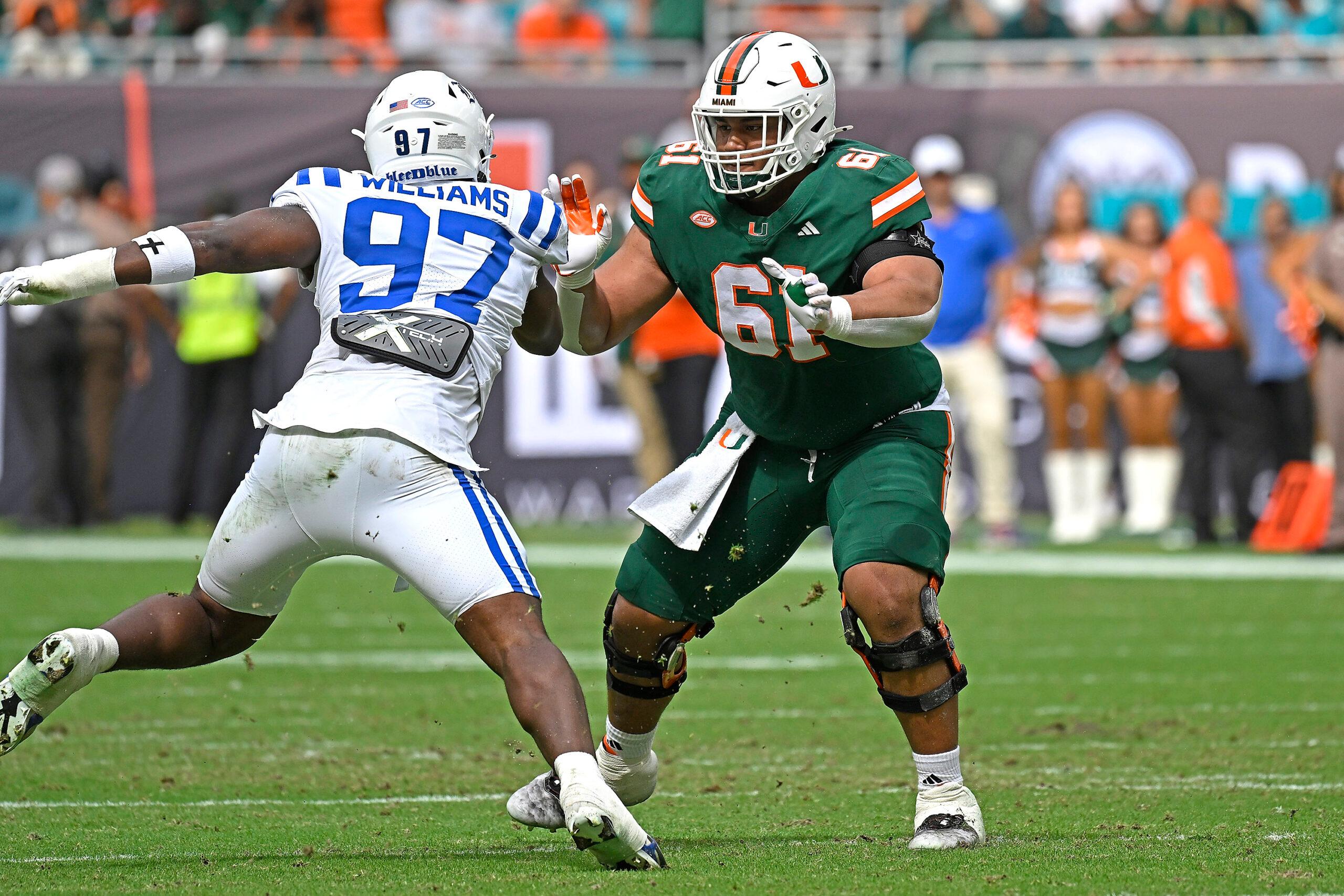
Francis Mauigoa, OT, Miami
Like World and Proctor, Mauigoa has eye-popping physical traits and the prototypical size the NFL is looking for in a star tackle. He has a good first step out of his stance as a run blocker, the power to stop defensive linemen in their tracks, and enough agility to keep speed rushers in front of him. Similar to Armand Membou in the 2025 draft class, I expect that he’ll be athletic enough to make teams consider moving him from right tackle, where he plays in college, to the left side at the next level, even if it takes him some time to adjust.
Rising Stars on Defense
Caleb Downs, S, Ohio State
I’ve been waiting for Downs to be draft eligible since the first time I watched him early in his career at Alabama while he was playing for Nick Saban. He transferred to Ohio State before last season, and even while playing on a Buckeyes defense loaded with future pros, he was often the best player on the field. He has a natural feel in pass coverage, knowing when to undercut routes when in man and where quarterbacks want to go with the ball when he’s playing zone. His closing speed is as good as I’ve seen from a safety in years, and he has the ball skills to turn any pass into a turnover. He's probably the most complete safety prospect I’ve watched since Minkah Fitzpatrick. If this were a formal big board, I’d have him as my top overall player in the 2026 draft class.
Peter Woods, DT, Clemson
If there’s a defensive player capable of challenging Downs for the top spot in this class, it’s Woods. Just about every draft evaluator liked Mason Graham’s tape before the 2025 draft, and Woods’s Clemson film is better. Woods, who has prototypical size for an NFL defensive tackle, has powerful hands when he’s striking blockers, the anchor to fight double-teams on the interior, and the quick twitch to win as a pass rusher. His repertoire of pass-rush moves is impressive as an interior lineman. With defensive tackle becoming a premium position in the current NFL, Woods could be considered the top pick next spring. At worst, he might be the first non-quarterback taken.
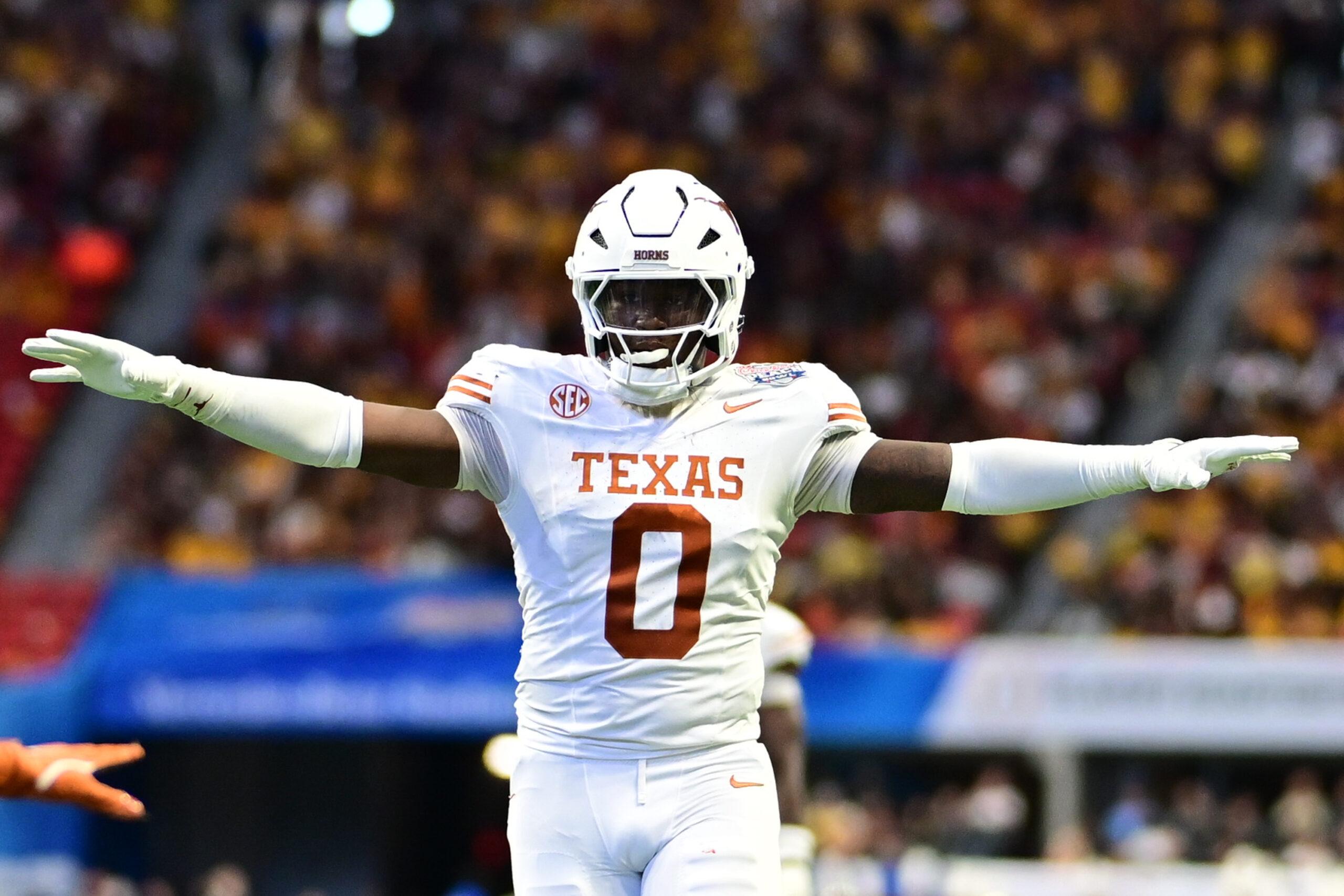
Anthony Hill Jr., LB, Texas
You know I couldn’t get through this piece without stumping for a linebacker. Hill has a hybrid skill set, similar to what we saw out of Jihaad Campbell in this year’s draft. Had Hill been in the 2025 class, he might have been the first linebacker selected. The burst he shows while in pursuit is attention-grabbing, and he attacks ballcarriers and quarterbacks aggressively. He’s a violent tackler and does a good job at diagnosing plays. Texas moves him around in the front seven, using him as a blitzer, coverage defender, or additional rusher. He’s just 20 years old right now, so there is plenty of room for him to continue developing.
T.J. Parker, edge, Clemson
Parker is the most intriguing edge rusher in the 2026 class. He has prototypical size for an NFL edge, at 6-foot-3 and 265 pounds, and he’s flashed all the traits I want to see in a potential first-rounder. He’s bendy, and he can turn the corner and win with different pass-rush moves if pure speed isn’t enough. When he needs it, he can convert speed to power and walk a tackle back into a quarterback’s lap. He also creates havoc in the backfield as a run defender. If he can follow up on his impressive production from last season, when he had 30.5 tackles for loss and sacks combined, he’ll solidify himself as a blue-chip prospect.
Rueben Bain Jr., edge, Miami
Bain is a powerful edge prospect who probably needs one more season of undeniable production to solidify himself as a potential star at the next level. He’s been an impact pass rusher since the day he stepped on Miami’s campus, using his high motor and pocket-manipulating moves to create pressure and finish with contact. I love his second and third efforts to get home when he’s rushing the passer. He can get underneath a tackle’s center of gravity and shove them off or set up inside countermoves, and his first step helps him wreak havoc in the run game. Scouts may have questions about Bain’s physique and length (he’s listed at 6-foot-3 and 275 pounds). That stout build might make it hard to consistently win his reps on the edge in the league, but I expect he’ll be in the conversation for the bottom half of the first round next April.
Jermod McCoy, CB, Tennessee
When I look at McCoy, I see a potential Pro Bowl–level NFL cornerback. He transferred from Oregon State to Tennessee before the 2024 season and emerged as the best defensive back in the SEC. He has impressive juice in his lower body, running stride for stride with the fastest receivers when in man coverage and closing quickly on the ball when he’s in zone. He flashed his ball skills several times last season, with four interceptions and nine pass breakups, and he has the size (listed at 6 feet and 193 pounds) and disposition to be an effective tackler. If not for Downs, I’d probably pick McCoy to win the Jim Thorpe Award for the sport’s best defensive back next season. Still, he should be at the top of the board for NFL teams in need of a true no. 1 corner.
LT Overton, DT, Alabama
Overton’s explosiveness and relentless effort are the first things you notice about him on film. He seems to be always working toward the quarterback, refusing to be blocked. I love the first step he possesses as a rusher over 280 pounds, and his violent hands help him reset the line of scrimmage in the run game. Based on his athletic profile and high floor as a run defender, he’s safely in consideration to be a top-60 pick in the 2026 draft. If he improves his overall technique next season and plays with more consistency, he might see his stock rise.
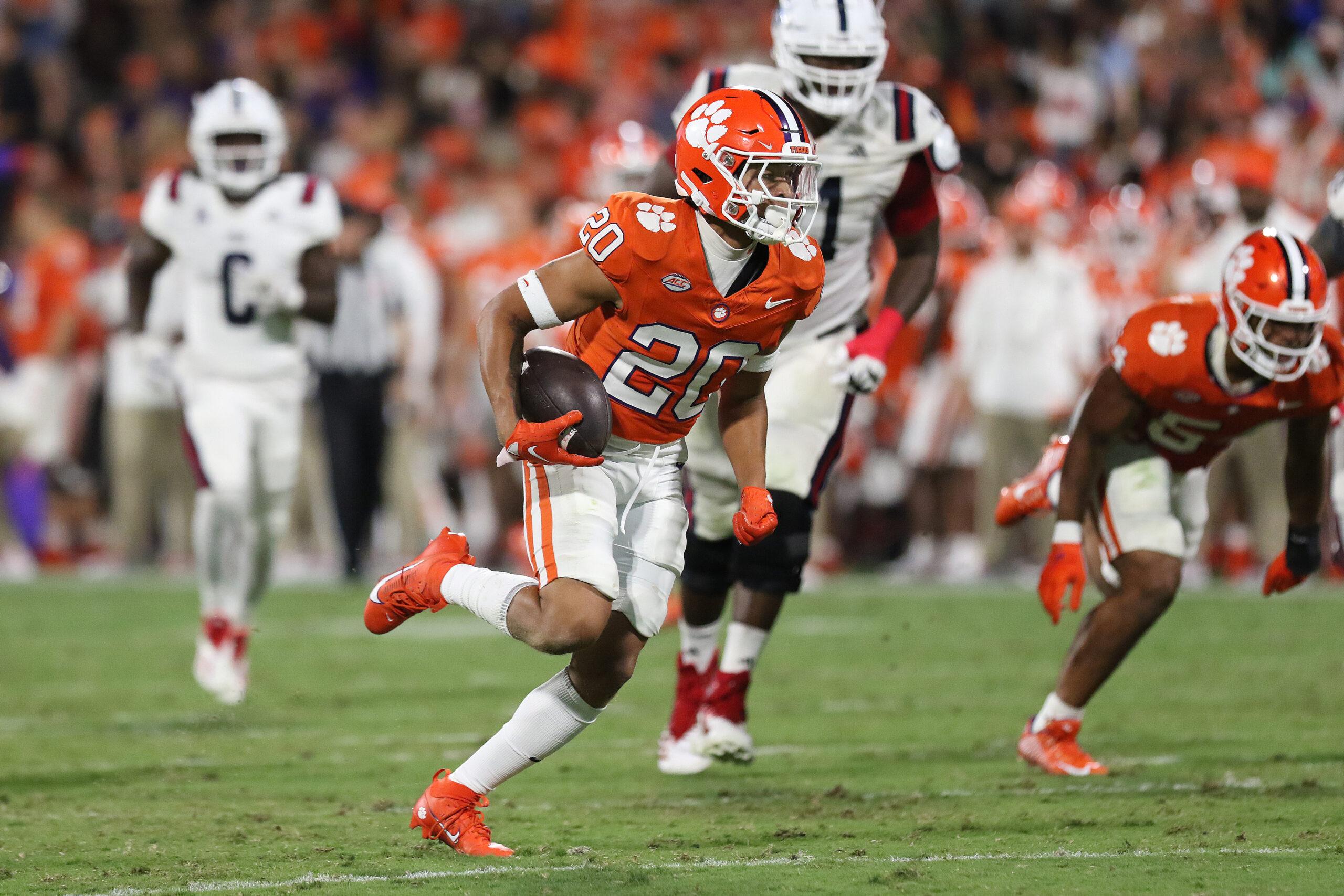
Avieon Terrell, CB, Clemson
If I just played you clips and didn’t tell you which year they were from, you’d have no way to tell Avieon Terrell’s Clemson tape from that of his older brother, A.J., who was a first-round pick by the Falcons in 2020. The two have identical movement skills and the same top-end speed. Avieon has a high football IQ as well, diagnosing routes and showing that he knows how to adjust his path to close space. Even though he’s not the most physically imposing corner, he’s unafraid of tackling ballcarriers.
Terrell could be overshadowed this season by the elite players on Clemson’s defensive line, and his weight (currently listed at 180 pounds) could be a hang-up for NFL teams that are evaluating him, but I see him as a top-three corner in this upcoming class.
David Bailey, edge, Texas Tech
Bailey is the best defensive prospect eligible for the 2026 draft you probably haven’t seen much of yet. He had seven sacks and multiple forced fumbles at Stanford last season and transferred to Texas Tech for the 2025 season. Bailey has a great first step, and he uses his hip and ankle mobility to get around the edge untouched. He has the speed and length NFL scouts look for, and he’s flashed an ability to work countermoves when speed doesn’t help him get to the quarterback. If there’s something for him to prove at Texas Tech, it’s that he can add weight without losing his burst and that he can play with physicality despite being an undersized pass rusher.
Malik Muhammad, CB, Texas
I still need more time to project Muhammad’s ceiling and his best fit in the NFL, but based on how Texas has used him so far, I think there’s potential for him as a high-end zone corner at the next level. Muhammad spends a good amount of his snaps in off coverage, and I think he’s at his best when he keeps receivers and the ball in front of him. His short-area quickness looks good, and he can close on receivers when they’re breaking away from his leverage. I’d like to see more ball production, which would catapult him into the conversation as a top-three cornerback, but with his size and good-enough speed, he looks like a player who’ll be highly regarded by the league next draft season.




